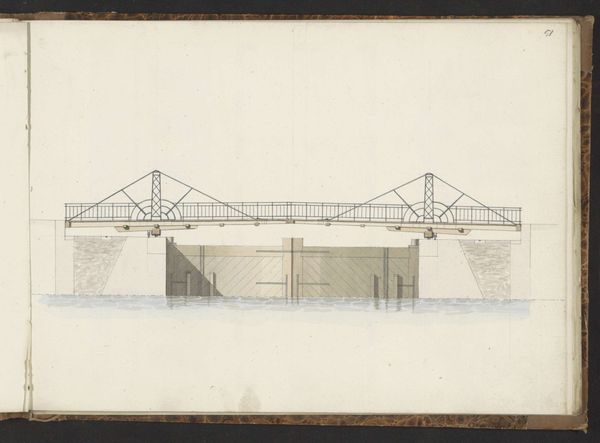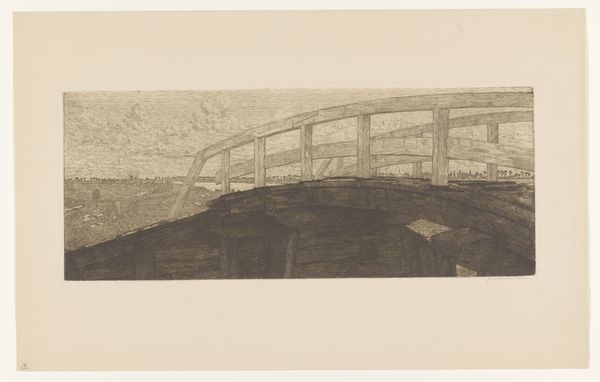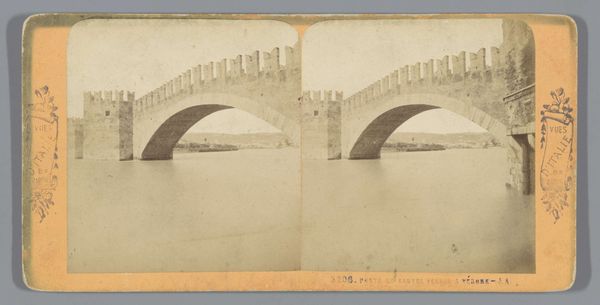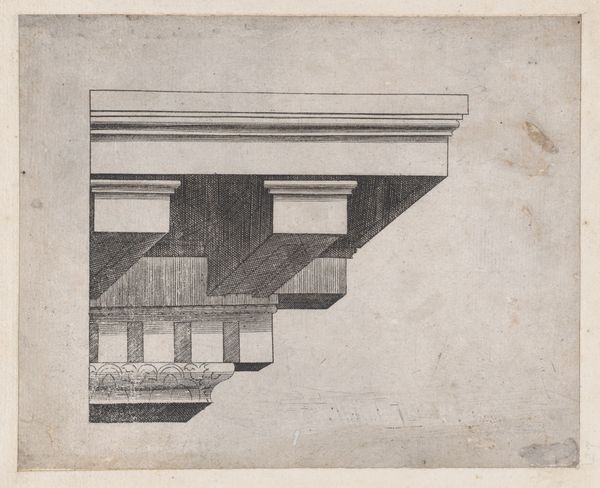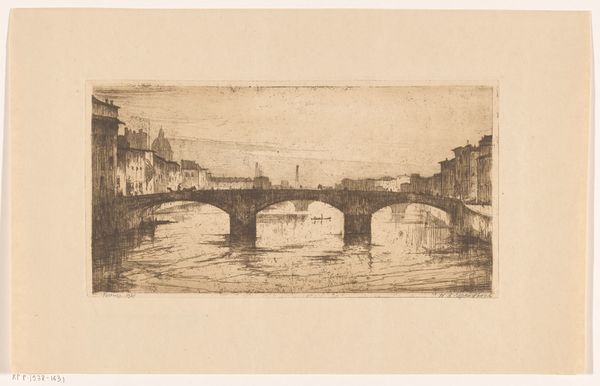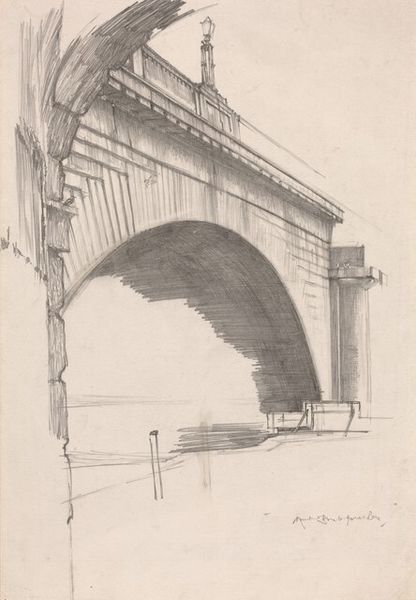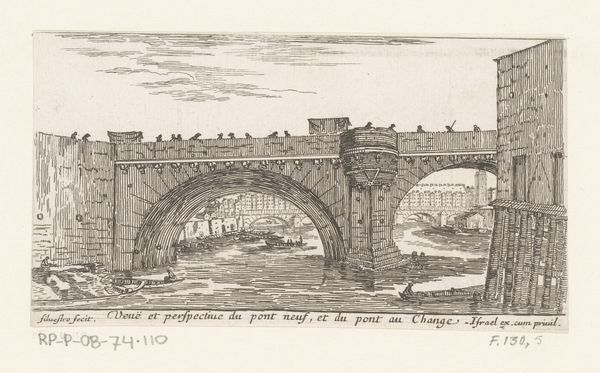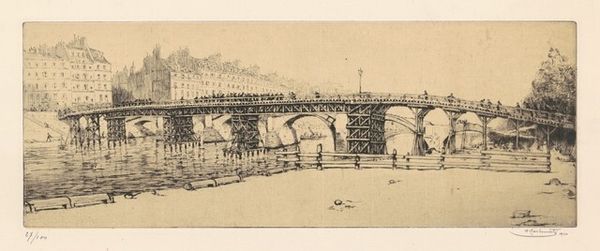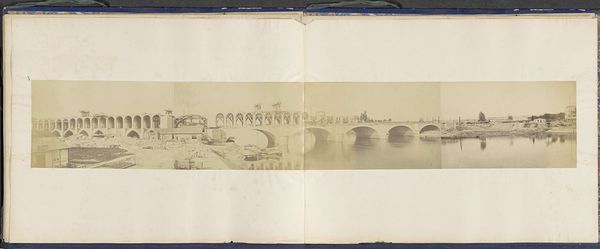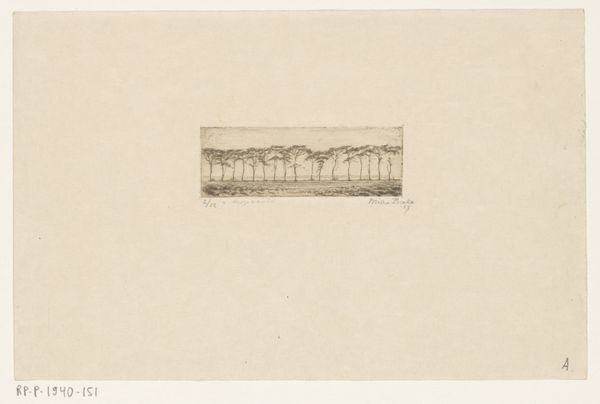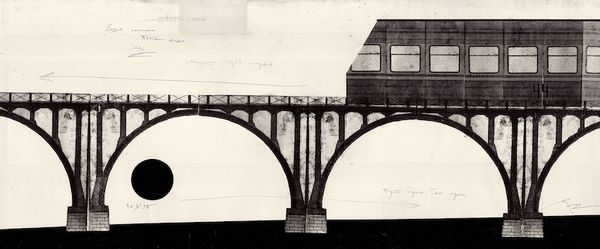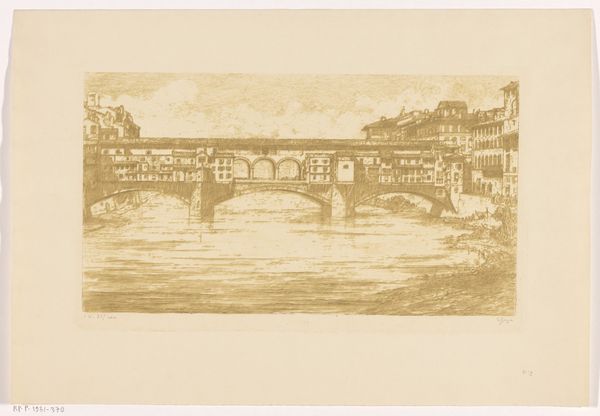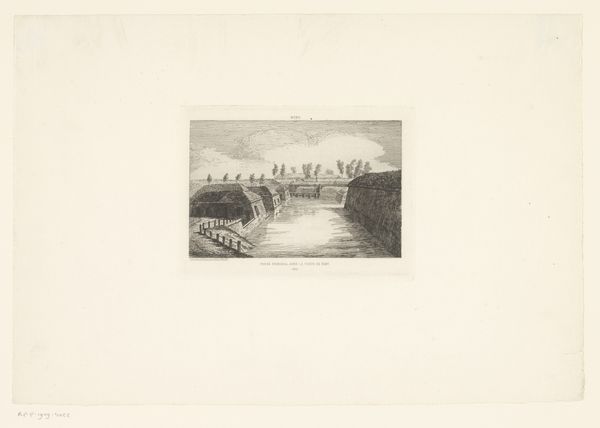
drawing, print, paper, ink, architecture
#
drawing
# print
#
paper
#
ink
#
coloured pencil
#
geometric
#
line
#
cityscape
#
architecture
Copyright: Oleksandr Aksinin,Fair Use
Curator: Welcome. We’re standing before Oleksandr Aksinin's “Bridge,” created in 1975 using ink, paper, and what appears to be colored pencil in a detailed print. Editor: Immediately, I'm struck by the precision. It’s almost architectural, but the soft hues create a dreamlike atmosphere, a contrast between the rigidity of the bridge and its ethereal presentation. Curator: Aksinin, although working during the Soviet era, engaged deeply with the modernist movements happening outside the USSR. Notice the interplay of geometric shapes and the meticulous linework; it’s very reminiscent of constructivist aesthetics filtered through a more personal lens. Editor: Absolutely, and considering the socio-political climate, this fascination with form takes on an interesting meaning. While outwardly depicting infrastructure, could it be a subtle commentary on control and connection, perhaps longing for linkages that extend beyond borders? Curator: It’s plausible. Bridges are inherently symbols of connection, yet here, there’s also a sense of distance. The bridge spans, but there are no figures present; the perspective emphasizes isolation more than communion. And, the image shows an uncanny superimposition of several bridges. Editor: It makes me think about accessibility too. Who gets to cross this bridge? Whose stories are erased in these grand constructions? Is this accessibility only a utopian idea? The city appears to flow underneath but we can't make it clearly. Curator: These are pertinent questions for any urban landscape, then and now. Aksinin gives us an apparently pragmatic subject, an example of engineering, but actually, presents us with a rich array of interpretive and even philosophical concerns. Editor: The way the natural elements are shaped interests me as well; they are designed too as the structure surrounding it, so one could not ensure that a bridge links a true wild scenario. Curator: Yes, that ambiguity is part of what makes Aksinin's work so compelling. Editor: Definitely! This work acts as a subtle encouragement to rethink who creates the routes and for what purpose. It inspires one to rethink about a modern urban life. Curator: I agree. We appreciate this image due to the complex questions that raises related to societal power in an interesting era for the Soviet Union, so it still maintains its interest and is also a legacy to look forward to.
Comments
No comments
Be the first to comment and join the conversation on the ultimate creative platform.
